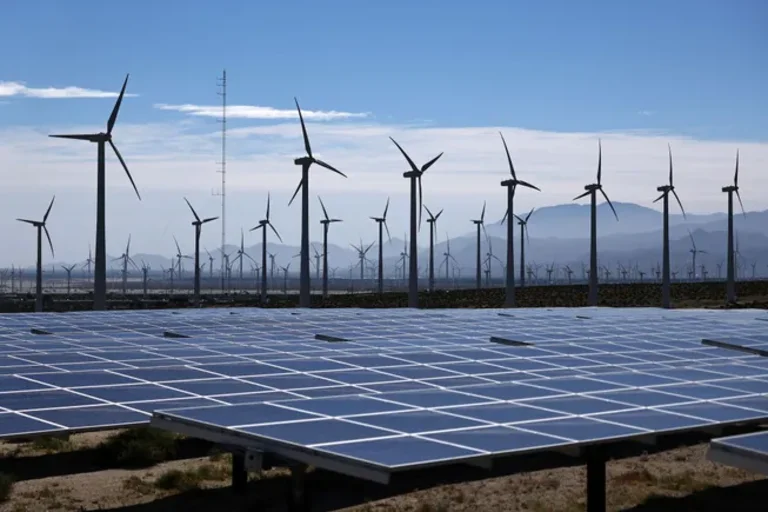
Solar & Wind Groups Look For Aid After Trump’s Subsidy Cuts
The clean energy sector was alarmed by significant shifts in U.S. policy in July 2025. Several companies are now requesting aid from California after new rules signed by former President Trump reduced tax subsidies for wind and solar energy.The letter was signed by representatives of the California branch of the American Clean Power Association, the California Wind Energy Association, the California Energy Storage Alliance, the Large-scale Solar Association, and the Solar Energy Industries Association.
Why Solar and Wind Groups Are Sounding the Alarm:
1.Trump’s Tax Law Tightens Rules and Reduces Deadlines:
- Tax Credit Phaseout: For wind and solar projects to be eligible for tax credits from the government under the new law, development must start by 2026. Those that begin later have to be up and running by the end of 2027, which is a far more stringent deadline than the 2032 one.
- Stricter Eligibility: New limitations, such as prohibiting projects that use parts from China or other “foreign organizations of concern,” have been ordered to be implemented by the Treasury Department.
- Economic Impacts: According to the Solar Energy Industries Association Up to 35,700 solar jobs and 25 manufacturing plants in California could be at risk.
2.California Leaders Are Needed Immediately:
In a letter to Gov. Gavin Newsom and state legislators, five major industry associations—including the California Energy Storage Alliance, California Wind Energy Association, and Solar Energy Industries Association, requesting.
- New state-backed clean energy procurement programs to replace lost federal incentives.
- Project approvals can be accelerated through faster environmental reviews and permits.
- Expanded land-use policies, such as allowing more solar farms on agricultural land.

The Bigger Picture: A Battle Between Federal Policy and State Ambitions:
1.California’s Clean Energy Leadership at Risk:
In 2023, California will have two-thirds of its retail electricity from carbon-free sources, making it a global leader in renewable energy.Trump’s policy changes, however, which are presented as an effort to preserve “cheap, reliable, dispatchable domestic energy,” clearly contradict the state’s advancements.
2.Rising Costs and Political Tensions:
- Higher Electricity Bills: Since savings from federal tax credits are usually passed on to customers, the Energy Commission of California cautions that removing them could result in higher electricity costs in the future.
- Offshore Wind Uncertainty: Despite the longer delays for California’s floating offshore wind projects off Humboldt and Morro Bay, the new federal laws could destroy confidence in investors.
3.What California Can Do Now:
Industry leaders suggest several solutions:
- Use cap-and-trade revenue: For making up for increased project expense.
- Expedite permitting: Under the California Environmental Quality Act (CEQA).
- Expand regional power markets: To improve grid efficiency.
A Critical Moment for Clean Energy:
While the reductions in federal subsidies are a significant setback, California has the resources to lessen the harm. Even as federal help wanes, the state may maintain its clean energy transition by expediting allows, increasing state financing, and simplifying rules.
A key hurdle for clean energy is the expiration of federal subsidies. However, California may continue to set the standard with careful planning.
Relatet Article>https://www.climatechallange.com/the-role-of-solar-energy-play-in-cloud-formation/